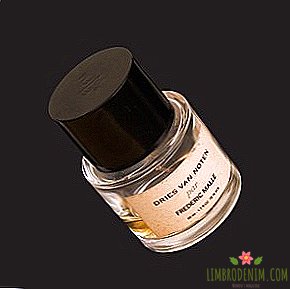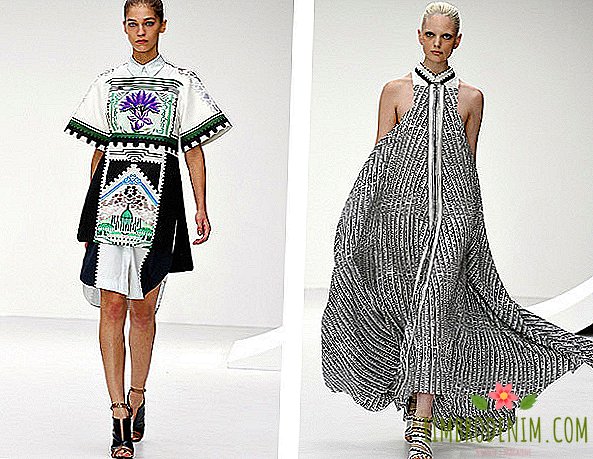From Galliano to Lagerfeld: Why discrimination goes out of fashion
Last week on Stefano Gabbana's instagram There were photos of several items from the Family capsule collection - in the most literal and modern reading. The brand adorned bags and t-shirts with applications in the form of married couples - heterosexual and same-sex, of all ages and skin colors, embracing relatives and adopted children. The collection became a part of the large-scale project #DGFamily (where, for example, they offered to send photos of mothers and daughters in the same outfits) and it means a little more than just an attempt to monetize the spirit of the times.

Last year, Domenico Dolce showed somewhat different views on family values. In a March interview with the Italian edition of Panorama, the designer, openly gay, spoke out against adoption and adoption by same-sex couples, and called children “surrogate mothers” for children born to surrogate mothers. The response was stormy, and the musician, husband and father of two sons, Elton John not only attacked designers with criticism, but also called for a boycott of the brand’s clothes, creating the #boycottdolcegabbana tag - 5754 photos are now posted under it. The scandal was partly resolved by public apologies, but raised several important questions - including about internalized homophobia, about how Catholic Italian traditions are sewn into the DNA of the brand and how much they are able to put pressure even on those who have world fame, money and ) freedom.
Domenico and Stefano never say that Family is their corporate response to criticism, but it is impossible to look at the collection in isolation from last year’s embarrassment. “We discussed this problem a lot, and I realized that I was wrong. Everyone has the right to make their own choice,” Dolce told Vogue in an August interview, and commented the main fashion magazine on the planet: “What is this? True repentance or an attempt to save reputation and business?" It would seem that Dolce & Gabbana stores are not closing, seasonal collections are still warm, sales are growing, and almost 8 million people are watching the brand on Instagram. So why did the duet find it necessary to once again (and this time "correctly") speak out on the topic? Moreover, not everyone reacted with admiration to this gesture: hundreds of homophobic comments appeared under the pictures, for which no one plans to apologize. "The world has gone mad" - the most loyal and censorship of them.
The world, of course, did not go crazy - it is just hard for many to accept the idea that it is changing. Irish people are popularly voting to allow same-sex marriages, women rebel against unequal pay, men take to the streets in mini-skirts to stop the violence. One of the main contenders for the Oscar is the mainstream melodrama about the transgender woman "Girl from Denmark", in which everyone sobs, regardless of gender and gender. Even the "popular" tabloid Daily Mail begins to speak from anti-sexist positions, and this is a very definite signal.
In 2016, it is impossible to be a prominent player in the industry, tied to a point hit in the spirit of the times, and declare artificial insemination to be godless. These changes did not begin inside, but came from the outside: when the line came to fashion, it turned out that ordinary people were busy in it, including those with conservative or stagnant views. And several illustrative examples have shown that no one else will blame such views on eccentricity or naivety. Fashion is a serious business, and public rehabilitation for the same Domenico and Stefano is more important than buying gay-friendly bags in Russia or the United Arab Emirates.

Social responsibility is a clear understanding that every step you take (even if it is a bag release) can influence the audience in a certain way and shape its views, but the joke is that the views of the audience are already formed. At least its advanced part. Yes, sales of Dolce & Gabbana would not collapse right now, but they would surely creep down over time if the designer’s views were reactionary. A number of models, stylists and editors, department stores and online stores would gradually stop working with them. And if Domenico and Stefano did not plan to retire, then their capsule collection is quite a competent business decision in the current situation.
Fashion has long been a celestial being, sending directives to the earth: what designers say is right, what they sew is beautiful. But three years ago it became clear that the alignment of forces had changed: when in 2013 Karl Lagerfeld publicly called Adel with “pseudo-romantic care” “a little too full,” he did not look like a ruler of thoughts, but an outdated lukist. After these words, Adele was what she was, and instead, I want to believe that something has changed in the head (or at least in the language) in Lagerfeld. At least more in attempts to shame a person for waist size he was not noticed and is unlikely to be.
It is impossible not to recall another, even more discussed and more dramatic precedent - John Galliano's anti-Semitic escapade, which cost the designer reputation, Christian Dior's career, many famous friends, money, his own brand and health. Yes, Galliano was able to rehabilitate himself and return to work, taking the post of creative director Maison Margiela, but this fact of biography is clearly a designer. In the spring, Galliano gave a penitentiary speech in the central synagogue of London, and his support group was Rabbi Barry Marcus. Was it, repeating the Vogue question, a gesture of goodwill or an attempt to keep the industry? You should not try to guess (and this is not our business), but it is obvious that neither Chanel, nor Christian Dior, nor Maison Margiela can afford to be on the same board with discriminatory views.
Older models have sex in jewelry Vogue Paris, because beauty and sex have no age; men come to the podium in heels, in rhinestones and with makeup at the Ashish show, because fashion does not depend on gender, and gender depends on gender; Rick Owens releases men without panties to the podium (because it’s time to take on corporeality) and hangs women around each other’s neck (because girl power). Before our eyes, the time passes when it was possible to say: “If a woman’s body is well-groomed, there will always be someone who buys a mink coat for her,” and even more so in this way to try to sell this fur coat.
Photo: Acne, Dolce & Gabbana





